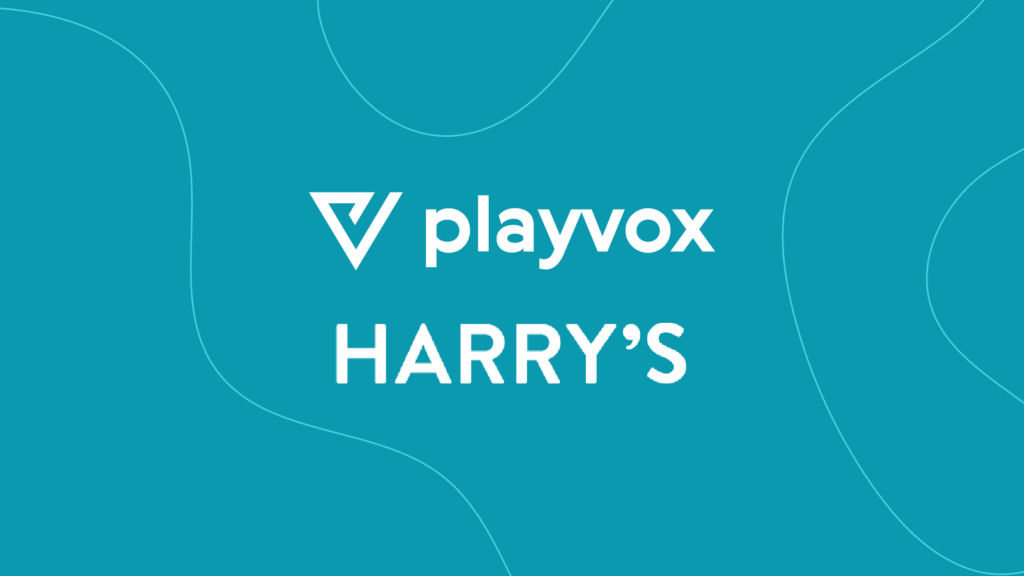Gamification

Book a personalized demo with a Playvox expert
Gamification, or adding game-playing and game design elements to nongame environments, has been around for some time. Inspired by video games, gamification in a business context is used to increase motivation and engagement, drive behavioral change, and achieve specific goals. Done right, a gamification strategy in the contact center can improve agent engagement, ultimately positively impacting customer experience.
What is Gamification?
Gamification applies the elements of games — fun, play, rules, uncertainty, and challenge — to non-game contexts. Common game-like elements include:
- Goals relating to what an employee needs to accomplish
- Points that track progress
- Feedback on how actions have affected progress
- Badges signaling accomplishments
- Leaderboards revealing your standing versus competitors
Businesses use gamification to enhance marketing campaigns, consumer product launches, brand profiles, customer service and support efforts, employee engagement, and much more. For example, gamifying customer loyalty programs can increase participation and enhance brand and customer loyalty. It’s also becoming more common for organizations to incorporate gamification elements into their company culture to improve employee engagement and team morale.
With gamification, employees continuously work to achieve the organization’s business objectives and, in turn, get rewarded and recognized. In a contact center setting, this can mean badges, a point system, and moving up to the next level when agents perform well. It can even be as simple as creating leaderboards to showcase your highest-performing team members.
Examples of Gamification in the Workplace
Companies use gamification in the workplace to engage and motivate customers, prospects, sales teams, developers, and contact center agents.
Some examples include:
- A large technology company uses riddle game techniques to attract skilled job candidates. This same company uses a game-like app with rewards to encourage employees to save on travel expenses.
- Training organizations offer prizes and rewards for completing learning modules and interject game-like interactivity to keep employees interested as they progress.
- Contact center managers leverage gamification techniques and tools like badges, point systems, and leaderboards as part of an overall quality management solution to attract, engage, and retain high-performing agents.
How Gamification Works
Researchers in a Harvard Business Review article stated gamification can enhance engagement because the techniques activate three core elements of human motivation.
Autonomy
Autonomy is the desire to direct one’s life—games provide an opportunity to choose a path. When agents pursue an activity for its own sake and not because external forces compel them, they gain motivation. They feel in charge and have a sense of ownership. If you give your employees the opportunity to select a course of action based on their values and opinions, they tend to stick to their goals for a longer period of time.
Competency
Competency is the desire to be demonstrably effective—games allow individuals to experience progress towards mastery. As your agents invest more time in an activity, they will naturally become more competent. The belief that effort fosters competence can inspire your agents to work harder on their targets and goals.
Relatedness
Relatedness is the desire to connect with others. Games allow agents to work with and against others and build a community around a shared interest. Employees are more motivated when something of value to them is at stake, and others around them share in the targets and goals.
As the fastest-growing cohort, Millennials will make up 75 percent of the workforce by 2025. To attract and retain this group of employees, companies need to pay close attention to their behavior and understand what motivates them. Gamification satisfies Millennials’ appetite for collaborative and engaging interactions.
Does Gamification Increase Engagement?
Agent engagement is a term used to describe the level of involvement, motivation, and emotional commitment that contact center agents have toward their work, goals, and the company.
To better understand the importance of agent engagement, consider the flip side. Agent disengagement leads to agents who are less motivated, less productive, and more likely to leave the company. Agent disengagement can also harm your company with decreased customer satisfaction and loyalty, lower sales, and fewer opportunities to increase your customer’s share of wallet.
Ultimately, engagement is about creating the right environment and conditions for your employees to fulfill their potential, give their best each day, and have an enhanced sense of well-being. Engagement is a commitment to an organization’s goals, values, and overall success.
One way to boost agent engagement is to acknowledge and celebrate the achievements of agents, whether it’s meeting performance targets, delivering exceptional service, or demonstrating innovation. Regular recognition fosters a sense of pride and motivation among agents. At Playvox, customers enjoy success by leveraging gamification to recognize agent performance.
Elements of gamification to increase agent engagement include:
- Let your agents earn points, rewards, and badges based on quality scores, learning courses, coaching sessions, or other metrics you track in the system
- Connect badges to specific company goals, inspiring higher performance and creating successful moments that build motivation and loyalty
- Use Leaderboards to ignite excitement around new KPI initiatives, learning session achievements, or nearly any other metric
- Incorporate a Community Wall, where agents can recognize peers, exchange ideas, and ask questions
How Gamification Motivates
In order to successfully implement gamification in your contact center, it’s important to dig deeper into what motivates agents.
Understanding Agent Motivation
Let’s explore the different factors that influence agent motivation, including intrinsic and extrinsic motivations, SMART goals, and career path planning. By gaining a deeper understanding of what motivates agents, you can better understand their actions and work toward creating more positive and productive environments that ultimately drive better customer experiences.
Intrinsic vs. Extrinsic Motivators
Intrinsic motivation comes from within the individual, such as personal satisfaction, a sense of achievement, and the enjoyment of the work. On the other hand, extrinsic motivators come from external factors, such as bonuses, promotions, or other tangible rewards.
When exploring how to motivate agents, it’s important to note that intrinsic motivators more significantly impact agent engagement and performance than extrinsic motivators. When employees are motivated intrinsically, they are more likely to be passionate about their work and go above and beyond to meet their goals. They are also more likely to stay with the company for the long term.
In a contact center, examples of intrinsic motivators include recognition for a job well done, opportunities for personal and professional growth through a defined learning path, and a meaningful and challenging work environment. Extrinsic motivators, on the other hand, may include performance-based bonuses, promotions, or other monetary rewards.
While financial rewards are important, intrinsic motivators are generally more effective in nurturing a motivated and high-performing team, as they lead to greater job satisfaction and sustained employee engagement. McKinsey data show that when employees are intrinsically motivated, they are 32 percent more committed to (and 46 percent more satisfied with) their jobs, suffer significantly less burnout than other employees, and perform 16 percent better.
This translates to employees who are much more likely to want to stay with their employer. It is not too great a leap to believe that these more experienced or engaged agents are likely to deliver far better customer experiences than their less experienced or less motivated peers.
Benefits of Gamification
The number one reason for adding gamification in the workplace is to engage and motivate employees. A gamification program can be beneficial for a remote workforce, where employees are distributed across multiple locations and may get little face time with one another.
Gamification offers benefits to agents while helping contact center business leaders meet objectives.
For Agents
- Leaders need to find ways to motivate different types of personalities and age groups in customer service centers. Adding game-like elements is one way to make work, feedback, and learning fun and engaging
- Delivering customer support is stressful, and agents feel pressure to deliver outstanding customer experiences with every interaction. Adding fun and rewards to everyday tasks can alleviate some of the stress and provide extra motivation to excel
- Friendly competition between teams, especially with remote workers, can bring a collaborative spirit and sense of community to dispersed teams. Gamification can promote collaboration and a sense of community
For Companies
- By making mundane tasks, training, and customer support challenges more fun, gamification can also make agents more productive and increase productivity. When employees have strong intrinsic motivators, work doesn’t feel like work anymore, and they can look forward to their jobs
- The goal of contact center leaders is to enhance the employee experience, which in turn positively affects customer satisfaction. Agents who are engaged and motivated through gamification are more likely to stick around, giving a boost to retention
- Enhance training and learning experiences—A TalentLMS study showed that gamified employee training significantly increased employee motivation (83% felt motivated) compared to non-gamified training.
- When gamification is tied to training and positive recognition and feedback, it can improve quality, ultimately yielding happy customers and a sense of accomplishment and job satisfaction for agents.
Limitations of Gamification
While the benefits of incorporating gamification in the contact center are numerous for both agents and organizations, there are some limitations and drawbacks to be aware of to avoid negative outcomes.
- Leaderboards and competitive elements of gamification solutions can create a sense of exclusion and demoralize individuals who may not perform as well as others. Gamification should be tied to positive feedback and teaching moments rather than adding a “Hunger Games” mentality
- For gamification to be successful, your agents must care about the organization, understand the business goals, and be invested in its success
- Gamification can result in superficial engagement, where agents primarily focus on earning points and rewards rather than truly immersing themselves in the experience and growth opportunities
How to Incorporate Gamification in Your Contact Center
Gamification is an effective strategy for retaining, training, and motivating employees. The key is to have a comprehensive action plan for adopting it in your organization.
- Set goals for gamification that are aligned with your overall business goals and contact center goals.
- Clearly communicate the goals and processes and strive to keep it friendly and motivating to avoid unintended consequences such as boredom, cheating, and a “survival of the fittest” mentality.
- Tightly cement game elements and game-based learning with frequent feedback and learning opportunities, which are intrinsic rewards.
- Vary the rewards and incentives to appeal to different types of motivation. Some agents value extrinsic rewards and are motivated by competitions and leaderboards. Others seek intrinsic rewards such as personal growth and development.
- Leverage gamification as a powerful tool to encourage a sense of community and collaboration in your company culture. This is particularly important when you have remote and dispersed teams.
- Track metrics for success and improve the strategy and tactics as you progress.
There are many gamification solutions on the market, so as with any technology you use in your business, you need to implement and fine-tune the solution you choose for the best results. Be sure the gamification tool you select inspires the agents to not only change their behaviors and improve skill sets, but also helps them achieve intrinsic motivation, a sense of achievement, and personal growth. After all, happier agents deliver better customer experiences.Learn more about gamification in the workplace and other ways to boost agent engagement in our eBook: Top Tips for Engaging and Motivating Agents.
Additional Resources
No posts
No posts
No posts


